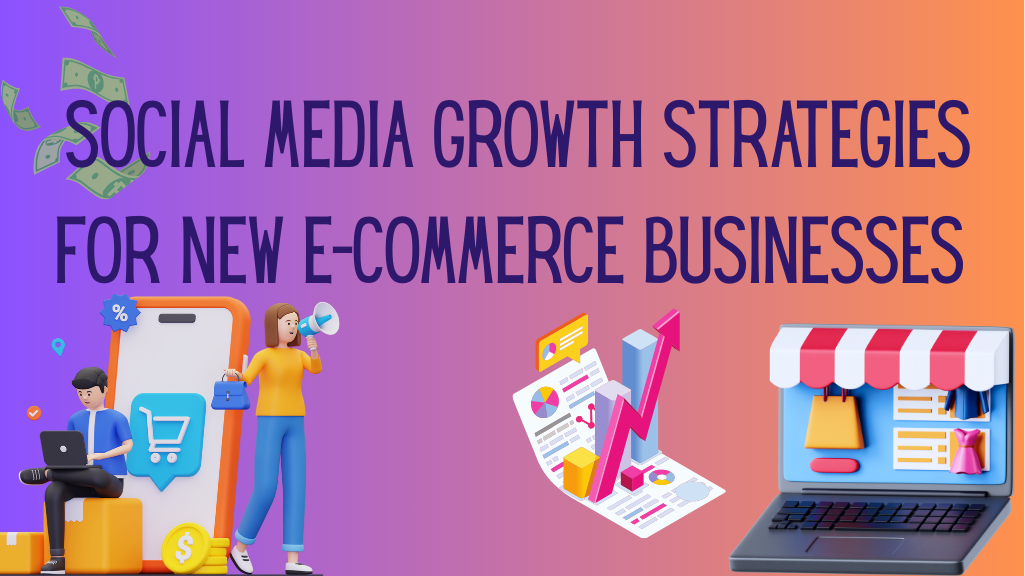Social Media Growth Strategies for New E-commerce Businesses

Launching an e-commerce business is an exciting venture. You’ve sourced your products, designed a beautiful website, and are ready for the orders to roll in. But there’s one crucial question: how will customers find you? For most new online stores, the answer lies in a smart and consistent social media strategy. It’s your digital storefront, your community hub, and a powerful engine for sales.
But where do you even begin? The world of social media can feel overwhelming. Don’t worry. You don’t need a massive budget or a dedicated marketing team to make an impact. You just need the right approach.
Find Your Niche and Master One Platform
The biggest mistake new entrepreneurs make is trying to be everywhere at once. Spreading yourself thin across Facebook, Instagram, TikTok, Pinterest, and X (formerly Twitter) is a recipe for burnout and mediocre results. Instead, start by identifying your ideal customer. Who are they? What are their interests? And most importantly, where do they spend their time online? If you sell handmade jewelry for young adults, TikTok and Instagram are your best bets. If your target market is homeowners in their 40s, Facebook or Pinterest might be more effective. Focus all your energy on mastering one platform first.
See also: The Use of Detection Technology to Combat Synthetic Media
Collaborate with Micro-Influencers
When you hear “influencer marketing,” you might picture celebrities with millions of followers on social media platforms and price tags to match. But the real opportunity for new e-commerce businesses lies with micro-influencers. These are creators with smaller, highly engaged followings (typically between 5,000 and 50,000 followers) who specialize in a specific niche. Their audience trusts their recommendations, making their endorsements incredibly powerful. Many micro-influencers are open to collaborating in exchange for free products, making it a cost-effective way to get your brand in front of a perfectly targeted audience. You can find them by searching relevant hashtags or seeing who your ideal customers already follow.
Run Smart, Small-Budget Ad Campaigns
While building an organic following is essential, a small and strategic ad spend can significantly speed up your growth. You don’t need to invest thousands of dollars. Start with a small daily budget, even just $10, to promote your best-performing posts or drive traffic to a specific product page. The real power of platforms like Facebook and Instagram Ads is their targeting capability. You can show your ads to users based on their interests, demographics, and even past online behavior. For example, you can create a “retargeting” campaign that shows a special offer only to people who have visited your website but didn’t make a purchase.
Embrace Short-Form Video
If you’re not creating short-form videos like Instagram Reels or TikToks, you’re missing out on the single biggest opportunity for organic reach. These platforms are designed to push engaging video content to new audiences, even if you have zero followers. The best part? It doesn’t have to be perfect. In fact, polished, overly produced videos often perform worse than simple, authentic clips filmed on a smartphone. Show a behind-the-scenes look at how you make your product, pack an order, or demonstrate a unique feature of what you sell. This type of content feels personal and helps potential customers connect with the person behind the brand on social media.
Harness the Power of User-Generated Content (UGC)
Modern consumers are savvy. They trust recommendations from real people far more than they trust slick advertisements. This is where user-generated content (UGC) becomes your most valuable asset. UGC is any content—photos, videos, reviews, testimonials—created by your customers. It’s authentic social proof that your products are loved and used by real people. Encourage customers to share photos with your product by creating a unique hashtag or running a monthly contest for the best picture.
FAQs
How much should a new e-commerce business spend on social media marketing?
There’s no magic number, but a good starting point is to allocate a small, manageable budget for ads (e.g., $100-$300 per month) and focus the rest of your resources (your time) on creating quality organic content. The key is consistency, not a huge budget. As you see what works, you can gradually increase your ad spend.
Which is better for a new e-commerce store: Instagram or TikTok?
It depends entirely on your target audience and product. TikTok is fantastic for reaching younger audiences (Gen Z and millennials) with trend-driven, entertaining content. Instagram has a slightly broader demographic and offers more versatile formats, including high-quality photos, Stories, and Reels. The best approach is to research where your specific customers are most active and start there.
How long does it take to see actual sales from social media efforts?
Patience is key. While a viral video or a well-targeted ad can generate sales quickly, building a sustainable sales channel from social media is a long-term game. It’s about building trust and community. You may see your first few sales within weeks, but it can take 3-6 months of consistent effort to see a reliable stream of revenue.





